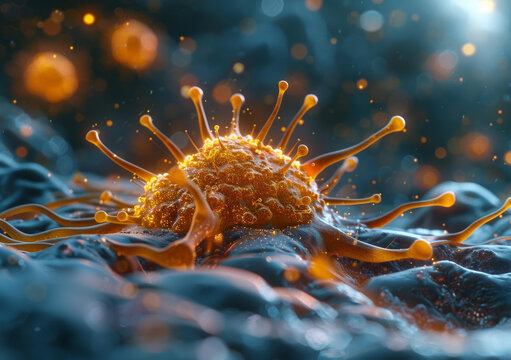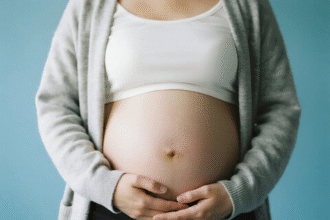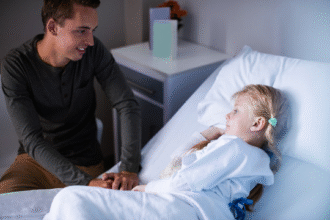Mumps at a Glance
Mumps is a contagious viral illness caused by mumps virus. It often causes painful swelling of the parotid salivary glands near the ears but can also be subclinical (no visible parotitis) in many cases.
Transmission, Incubation, and Infectious Period
- Transmission: respiratory droplets and saliva (kissing, sharing cups/utensils), and close contact. Outbreaks occur in crowded settings with incomplete vaccination.
- Incubation: typically 16–18 days (range ~12–25 days).
- Infectious period: most infectious from 1–2 days before parotitis onset to 5 days after onset. Viral RNA can be detected longer, but standard isolation is for 5 days after onset of parotitis.
Symptoms and Course
- Systemic: fever, headache, malaise, myalgias, sore throat, anorexia.
- Parotitis: painful swelling near the earlobe/angle of jaw; may be unilateral then bilateral (occurs in many cases); worsens with sour foods that stimulate saliva.
- Other salivary glands (submandibular/sublingual) can be involved. About 20–40% of infections may lack parotitis.
- Parotitis usually peaks within 3–5 days and resolves over 7–10 days; total illness ~10–14 days.
Complications and Who’s at Risk
- Orchitis (post‑pubertal males), oophoritis, mastitis.
- Aseptic meningitis/meningoencephalitis, hearing loss (usually unilateral, rare), labyrinthitis.
- Pancreatitis; less commonly thyroiditis, myocarditis.
- Severe disease is more likely in adolescents, adults, and the unvaccinated or immunocompromised.
Diagnosis and Differentials
- Clinical diagnosis during outbreaks is common. Laboratory confirmation when needed: RT‑PCR/NAAT from buccal swab (ideally within 3 days of parotitis onset) and/or mumps‑specific IgM/IgG serology.
- Differentiate from: bacterial (suppurative) parotitis (purulent duct discharge, high neutrophils), sialolithiasis, salivary gland tumors, reactive lymphadenitis, medication‑related parotid swelling (e.g., phenothiazines, iodides).
Treatment (Supportive Care)
- Analgesics/antipyretics: acetaminophen or NSAIDs as appropriate for age/health; avoid aspirin in children/teens (Reye syndrome risk).
- Hydration, rest, soft diet; avoid sour/acidic foods that worsen pain.
- Warm or cool compresses to the parotid region for comfort; good oral hygiene.
- Orchitis: scrotal support, cold packs, NSAIDs; consider urology evaluation for severe pain. Corticosteroids are not routinely recommended.
- Pancreatitis: supportive management (fluids, analgesia, gentle diet progression) with medical supervision.
- Antibiotics and antivirals (e.g., ribavirin) are not effective for uncomplicated mumps; use antibiotics only if bacterial coinfection is suspected.
Vaccination (Prevention)
- MMR (measles‑mumps‑rubella) vaccine provides good protection though not complete; two doses are recommended.
- Routine schedule: 1st dose at 12–15 months; 2nd dose at 4–6 years. Catch‑up: two doses ≥28 days apart for those without evidence of immunity.
- Not given during pregnancy; vaccinate postpartum if non‑immune. Ensure healthcare workers, students, and travelers have documented immunity.
After Exposure and Outbreak Control
- There’s no reliable post‑exposure prophylaxis to prevent mumps in exposed susceptible persons. MMR after exposure isn’t guaranteed to prevent disease but protects against future exposures.
- During outbreaks, a third (booster) dose of MMR may be recommended for certain at‑risk groups to improve protection — follow public health guidance.
Isolation and Return to Activities
- Isolate from others and avoid school/work for 5 days after parotitis onset (or from symptom onset in cases without parotitis). Masking and hand hygiene help reduce spread.
- Return when fever has resolved and 5 days have passed since onset, and you feel well enough to participate.
When to Seek Medical Care (Red Flags)
- Severe headache, stiff neck, confusion, seizures (possible CNS involvement).
- Testicular pain/swelling (orchitis), severe abdominal pain (pancreatitis), persistent vomiting.
- Hearing loss, severe ear pain, vertigo.
- Dehydration, persistent high fever, or rapidly worsening swelling/redness suggesting bacterial infection.
Educational information only; follow local public health guidance and consult a clinician for individualized care and vaccination advice.







